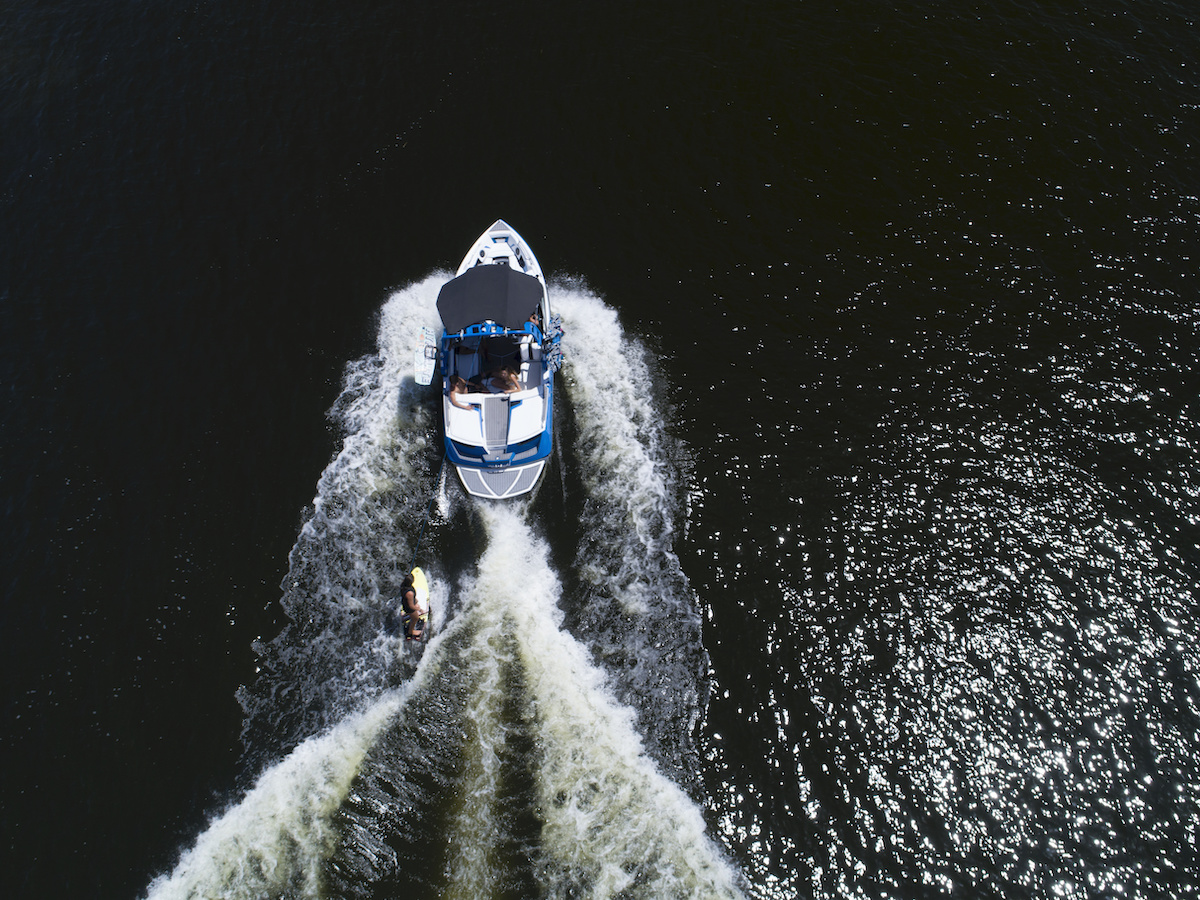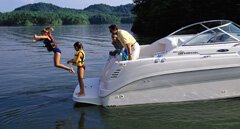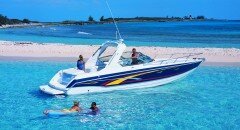A V-drive and a direct drive are both inboard propulsion systems, which means the engine drives a propshaft that passes through the boat bottom, with the propeller positioned under the boat and steering accomplished by a rudder. These days inboard power is most popular on watersports tow boats designed for wakeboarding and wakesurfing, where placing the prop deep in the water under the boat produces a clean wake and keeps the prop away from the person behind the boat. But inboard power can also be found as an alternative to a sterndrive or pod drive system on some cruising and sportfishing boats, where its chief advantage is its simplicity, reliability and ease of repair.
Inboard power–either direct drive or V-drive–is less complex and requires less service than a sterndrive, and is also less prone to corrosion in saltwater. However, the sterndrive can be trimmed, which results in superior speed and efficiency on small to mid-size boats. Pod drive systems feature a steerable prop and are a hybrid of an inboard and a sterndrive, but pods require twin engines and are available only for larger boats.
Direct Drive
A direct drive system places the engine or engines near the center of the boat. Power passes from the engine to a transmission that enables forward-neutral-reverse shifting, and then to the propshaft, which passes through the boat bottom at a 7- to 12-degree angle. This angle means some of the energy from the prop thrust is always lifting the boat, rather than pushing it forward.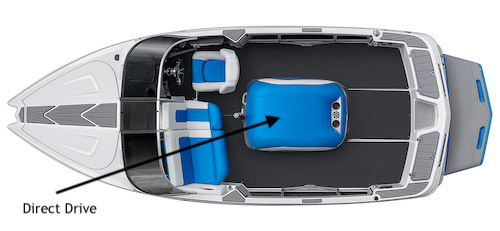
- The advantage of a direct drive system is its simplicity and its energy efficiency. Very little horsepower is lost in the direct drive transmission.
- The disadvantage is the location of the engine(s) near the middle of the boat. On a smaller watersports boat the engine resides under a “dog house” cover right in the middle of the cockpit, great for weight distribution but also in the way. On larger boats the engine(s) are taking up space below deck that could be used for a mid-cabin, storage lockers or fish wells, or tanks. On the other hand the engine(s) in a direct-drive system are usually easy to access for service.
V-Drive
In a V-drive system the engine is placed further aft in the boat, almost as close to the transom as the engine in a sterndrive. The engine “faces” aft with its output shaft facing forward and mated to a V-drive transmission that uses a series of gears to reverse the output direction 180 degrees and mates to the propshaft, which is in about the same position and angle as it would be found on a direct drive inboard system.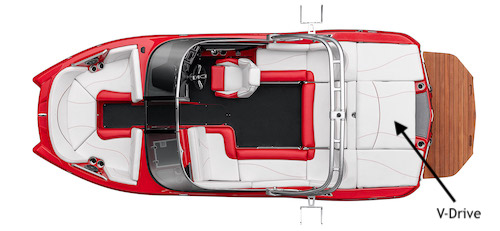
- The advantage of the V-drive is that the engine is placed aft. In a watersports boat with a V-drive system the engine is usually covered with a padded sundeck, so the boat’s cockpit is very similar to that of a sterndrive, with the middle of the cockpit open. On larger cruising and sport fishing boats, the space that would be occupied by direct drive engines is now available for that mid-cabin or other uses.
- The V-drive has some disadvantages. The aft placement of the engine is great for wake-boosting weight distribution in a watersports boat, but on larger boats that weight aft can make it harder for the boat to get on plane. The added complexity of the V-drive transmission results in more power loss than a direct-drive transmission. And because the engine(s) face aft service access is compromised because the drive belts, water pump, and alternator will probably be very close to the transom.
Read Next: Boat Motor Maintenance & Engine Repair
You Might Also Like:
- Boat Propellers: Repairs & Replacements
- Basic Boat Maintenance Guide
- Outboard Engine Care
- Boat Repair: Choosing a Marine Mechanic
- Find the Right Boat for Your Lifestyle
